At the No Land Art Space on Nov. 9, people were invited to Santa Fe University of Art and Design creative writing alum Ariana Lombardi’s show I Know That I Am to participate in a creative writing workshop that focused on the movement of language.
Q&A with Jamie Haug...
posted by Danell Horan
Jamie Haug, who graduated in December 2016 from Santa Fe University of Art and Design with a degree in film production, sought to gain as much experience as possible during his post-grad months.
The Hive Collective
posted by Melissa Dow
The Hive is a nascent art collective begun by SFUAD alumni.
Michael Pepp: Alumni Advice...
posted by Sophie Farrell
Performing Arts Department alumnus Michael Pepp discusses life after graduation and offers advice to current and graduating students.
Helping Hand
posted by Christopher Dorantes
SFUAD alum Forrest Soper helps Photography Department student Yoana Medrano hang her show in Marion Center for Photographic Arts.
Candyland
posted by Sophie Farrell
For the fashion show Candyland, Keynan Johnson transformed the ground level of Fogelson Library into an unsettling wonderland.
Godless
posted by Kim Jones
It’s every film major’s dream to land a job in their area of expertise directly out of college, and alumna Kim Blacknall’s dream is coming true: Blacknall is working as a production and script supervisor assistant for up and coming Netflix mini-series Godless.
Charlotte Martinez Takes Over The Screen
posted by Franco Romero
SFUAD alumni and former Jackalope writer Charlotte Martinez graduated last May with a double major in Film and Creative Writing. After working at The Screen for several years, Martinez has recently taken over as general manager. Martinez sat down with Jackalope magazine this week to talk about her new job, her experience in Jackalope and writing after graduation.
Jackalope Magazine: How exactly did you end up in this position, as General Manager?
Charlotte Martinez: I’ve been working at The Screen since I was, I think a sophomore. And Peter Grendel, who used to be the general manager here, he hired me when I came in to write, I’ll never forget this, I came in to write a review about one of the movies he played here. It was the first time I’d watched a movie here. Obviously I knew of The Screen, being a student here, but I had never actually gone in and watched a movie. So I went in and said, ‘I’m going to write this review,’ and he said, ‘hey, we need people to work here! Would you like to work here?’ (Laughs). So that was what, four years ago? I’ve worked here every year since, and me being the oldest employee, I guess it just made sense for him to ask me to take over management when he went to the Violet Crown, which is what happened. He took over general management.
JM: Will you describe your experience so far, managing The Screen?
CM: I mean, it’s one screen, so unlike let’s say Regal or even Violet Crown that have multiple screens to manage, it’s not terribly difficult. But it’s also not easy because it’s running a business and I’ve never done that before, you know? I mean, I just graduated in May but I knew The Screen really well and I knew how to work it so I think it made sense for me to step in as manager and do what I had been doing essentially. Except, with an office.
JM: How do you think SFUAD and your education here prepared you for this type of position?
Charlotte Martinez stands in front of Main doors of the The Screen. Photo by Jason Stilgebouer.
Charlotte Martinez stands in front of Main doors of the The Screen. Photo by Jason Stilgebouer.
CM: Hmm. I thought out of all the classes I took here, Jackalope was actually the most integrative. I mean, you’re forced to talk to people. Just going to do an interview is huge, and I mean socializing and everything. But I don’t know anything about running a business. Essentially, I’ve been learning all of this as I go, but I think being able to talk to people and being able to write something? I mean, it’s amazing, especially in New Mexico, just to write something really well and really professionally is a huge deal. So now that I know how to do that, I can communicate with everybody or anybody in this industry and make it sound like I know exactly what I’m talking about.
JM: Would you say then that being in Jackalope, and by extension Creative Writing, gives students skills they will use in a career?
CM: Definitely! And film too, don’t get me wrong. I mean this is a movie theater. I know about production, I know how distribution works now. I didn’t know anything about distribution, because I mean, we don’t learn that here. It’s all about making a movie, this is all about showing movies.
JM: What sort of crowd does The Screen attract, and what kinds of films are shown here?
CM: That’s a good question! Ever since I’ve worked here, it’s so funny because our patrons are the senior citizens of Santa Fe. I wouldn’t have guessed that when I first started working here. I’m like, ‘Oh cool, foreign, independent, it’s all very exotic.’ And what I found was the older crowd crowd coming in. I thought, ‘maybe that’s just this year.’ But no, that’s exactly who loves these sort of movies! They’re so fed up with blockbuster stuff. They are, they’re just like, ‘we won’t go to Regal to see another explosion, to see another Marvel movie,’ you know, it’s so predictable. And it makes sense, because that’s sort of our generation’s thing. They need a real quote-unquote ‘movie,’ and they think that’s independent and foreign cinema. Which it is, because they are essentially looking at the basics of film making still, where as blockbuster is more, you know, young person based.
The Screen empty hours before a movie starts. Photo by Jason Stilgebouer.
The Screen’s empty hours before a movie starts. Photo by Jason Stilgebouer.
JM: Modern blockbuster does seem to have a formula to it.
CM: It does! And this is the formula for the seniors. And it works out, because they really like it here.
JM: Do you think they are drawn to it also because it is so small, and the crowds aren’t as big?
CM: Oh, heck yeah. I mean that’s the first thing they say when they come in, they say they love this environment. It’s very homey, it’s very comforting. We know most of the patrons’ names when they come in and they know ours. It feels very small-town.
JM: Do you have a favorite genre out of the films which are shown here?
CM: Good question. I have to confess, I didn’t even realize this until last year. I really like war stories, and actually like reading war stories too. We played a movie called Phoenix here a while ago. German produced and it didn’t take place during a war, it was post-war, but it was still so well-done and I watched it three times just to analyze it. I find myself analyzing more war movies than anything else. I’m not sure that’s a genre, but if you tell me that it’s a war movie, or if it’s under that category, then I’ll watch it.
JM: I would assume you work closely with the film professors. How is the experience of helping them organize classes?
CM: Yeah, that’s true. That’s great too because I get to see my professors! And then if I ever have questions for them, you know. They’re really nice about coming into my office and giving me the answers still. It’s still that student-teacher relationship except it’s not because I’m technically faculty. But I still get to see them every day!
JM: You get to keep learning from them, even though you are no longer a student?
CM: Exactly. I wish I could have some sort of setup like that with Creative Writing as well.
JM: Is there anything in particular you missed about Creative Writing? Tell me about your time in the program.
SFUAD’s on campus movie theatre. Photo by Jason Stilgebouer.
SFUAD’s on campus movie theatre. Photo by Jason Stilgebouer.
CM: I always loved it. I think the staff was really consistent while I was there. I had Dana [Levin] a couple times and Matt [Donovan] I had a couple times, Julia [Goldberg] I had almost every year. I think that connection and the fact that this is such a small school made the writing department amazing. The professors got to know your work so they were really pressing down on it, where as any other university, they would probably be like, who are you again?
JM: You had a double major in Creative Writing and Film. Why both? Did you lean more toward one or the other while you were in school here?
CM: I went here first when it was the College of Santa Fe. I was always interested in the arts but I liked creative writing a lot more at that point. But then creative writing was this thing where you probably didn’t have a career afterwards and that scared me and it scared my family, so we said, ‘OK, what can we do to make sure you have an income?’ I said, ‘oh, I’ve always been interested in visual. In film making.’ So when the school re-opened I asked, ‘would it be impossible to do a double major?’ And they said ‘well, no. We’ve only had one other person and they didn’t finish, but give it a try.’ So I signed up right away my freshman year, taking both the creative writing and then the film classes. Both of which I really enjoyed by the way, but creative writing was my first love.
JM: You were mostly writing fiction, correct?
CM: I was only writing fiction until Julia Goldberg was like, ‘come join Jackalope!’ I miss it.
JM: Did you do screen writing as well?
CM: Well the curriculum here is that you try it all first, then maybe your junior or senior year you start to narrow in on what you’re interested in. I started off learning production, pre-production, post-production. You do the camera, you do script writing, you do everything, but I did enjoy screen writing more than anything. So yeah, it worked out pretty nicely!
JM: I enjoyed your piece that won for Glyph last year. Is the rest of your work similar?
CM: Yeah, I guess so. During my senior year, I really started exploring the story of my roots. The southwest and being Hispanic or being Native. It’s funny that you bring that up because my last year was really cultural-based, and I didn’t mean for it to be but it sort of turned out that way.
JM: Are you still writing?
CM: The last thing I wrote was a feature for The Reporter on small businesses and that was really fun, but I can’t be working for the Reporter if this is a daily job. But you know, I’m still writing for myself. I say, ‘one of these days this novel will be published. Obviously this short story will go somewhere.’
JM: I would imagine it’s nice to still be in a place of creativity, even if you don’t have as much time for your work.
CM: Totally! I thought it would be weird to stick around the university, because I was here for five years. It took five years to complete two degrees. So, it seems like I’ve been here forever but being just in The Screen and being stressed out about things happening in the film industry, it doesn’t feel like the same school to me. There’s just so many different tasks now, and I’m talking to grown-ups, which is weird and I’m being treated as a grown up rather than a student, not that that’s bad or anything. It’s just different.
JM: How is the experience of being here as a faculty member different from that of being a student?
CM: I think both are very stressful. Both have kept me very busy thus far, but working a business and being the only person in charge here? I mean, I have people that I report to, but there’s nobody overlooking The Screen besides me and I just graduated. I think anybody else would be like, ‘what are they thinking?’ But it’s not. I mean it’s a lot of responsibility and a lot of pressure at some point, but so far I’ve just been able to talk to anybody and everybody about it. They’ll help me. Or, they’ll have someone to send me to to answer questions. It is kind of like being a student in that way. You’re not alone no matter what, you know? Whether you’re a student, if you’re a teacher, if you’re running a business, people are willing to help. I think that’s a Santa Fe thing. I’m convinced that’s a Santa Fe thing.
Burchfield on Reggio
posted by Nicholas Beckman
Jackalope Magazine sits down with Film School alum Bonnie Burchfield, who landed a job working for acclaimed director Godfrey Reggio.
Honoring Miller’s Legacy
posted by Jonathan Hargraves
A benefit reception for musical artist and former CMP Chairman Steven Miller was held on Sept. 26, including a re-installation of “Along the Pecos”—a collaborative piece by Miller and photographer Jennifer Schlesinger Hanson.
Chad Edward Lee Evett on Costuming
posted by Bego Aznar
SFUAD costume design graduate Chad Edward Lee Evett discusses how he approaches costuming, and his goals for the future, in this audio-visual interview.
Life After School
posted by Maria Costasnovo
SFUAD alum Rebecca Alvarez discusses life after graduation.
Alumni Profile
posted by Arianna Sullivan
“As far as the Internet is concerned,” says Cordillera Productions Executive Director Jason Jaacks, “we are dealing with a Model T. There’s no V-8 here, And two weeks ago, we were like the Flinstones.” The Internet is still young in its development, but changing quickly. As it continues to grow and evolve as the leading tool for information sharing, documentarians like Jaacks are looking for ways to adapt storytelling to the Internet. Jaacks shared these thoughts in a lecture, “Documentary Without Borders: The Future of Storytelling in the Internet Age” on campus Oct. 3. According to Alenty, an Internet rating company, the average viewing time for a single web page is 33 seconds. Jaacks, a second-year student at the Berkeley School of Journalism and a 2009 graduate of the College of Santa Fe’s documentary studies program, is exploring storytelling techniques to engage viewers with attention spans shaped by the web. In order to create narratives that can hold an Internet user’s attention, Jaacks is experimenting with telling visual stories that have multiple narrative arcs and points of entry and that are interactive for the viewer—essentially interactive online movies. Jaacks cites Hollow as an example and source of inspiration for multimedia visual documentaries. The ‘movie’ explores the stories of more than 30 residents of McDowell County, W. Va. Online, Hollow consists of several visual timelines, made up of still and moving images, which can be scrolled through at the viewer’s leisure. Along the way are links to the detailed narratives of the stories featured on the timeline. The first time that Jaacks visited Hollow’s website, he spent two hours on it, putting the 33 second average viewing time to shame. Jaacks began telling stories through several mediums with his senior thesis as a student at CSF. His...
Alumni Profile
posted by Shayla Blatchford
Originally from New England, Erin Currier is currently a Santa Fe resident who graduated from the College of Santa Fe in 1997 with a BFA in Theater Design. As a child, Currier grew up drawing, painting and collaging alongside her mother, who was a huge influence on her. While working in a coffee shop, Currier was “struck by how much trash was thrown away every day.” It was the packaging and the overall aesthetic of these articles that caught her attention. She began to collect particular pieces of trash, which purposefully made their way into her collaged paintings of Buddhist deities and Taras. Within a year of graduating, Currier had her very first solo show in Taos. With great response, her work had made it to the cover of the newspaper and onto the radio. Since her debut, Currier has been able to follow her childhood dreams of making art and traveling the world. Over the years her work has “shifted from Easter spirituality to a much more outwardly sociopolitical bend.” Currier had a recent show at Blue Rain Gallery in Santa Fe, where she is a featured artist....
The Surprises in Poetry
posted by Arianna Sullivan
“Please don’t be too polite,” said Joanne Dwyer, after reading the first of several poems from her first book, Belle Laide. “I want poetry readings to have a little more life in them. Be yourself… heckle me a little!” Before her reading began on Tuesday, Sept. 24 at SFUAD’s O’Shaughnessy Performance Space, Dwyer had admitted she was nervous, telling a friend that normally she spends “days and days and days not seeing anybody.” Once in front of the podium, however, she commanded the audience with a combination of humor, naked earnestness, and a reading voice that gave no sign of shaking. Dwyer straddles these sorts of dualities— internal shyness and outward composure—in her writing as well as her life. On one hand, she loves the fragmentation and collage of poetry, the way that “words and how we string them together are our tools as writers.” The rules in poetry are different, Dwyer says, so she feels free to let “imagination reign free to create image, sound and tonality without the normal everyday mundane rules of language.” At the same time, however, Dwyer admits that maybe the fragmentation and shorter form of poetry just matches her attention span better as a writer than fiction would. She loves reading fiction—making an effort to read Marquez’s One Hundred Years of Solitude annually—but says that, “the idea of writing a plot is just terrifying.” Her poetry, she explains, does not look for a truth in the way that a novel might. “Sometimes,” she says, “even I couldn’t tell you what the hell it’s about—that’s the magic of poetry, but sometimes I wonder if it’s to my detriment as a writer, if I’m just hiding behind the language.” Still, Dwyer is praised for her stream-of-consciousness and vocabulary-rich writing. She writes, says Creative Writing Co-chair Dana Levin, who taught Dwyer as a student at the College of Santa Fe, “in a way that tracks how the mind thinks. It is associative rather than linear.” Dwyer keeps this interesting by avidly reading up on everything historical, mystical and etymological that catches her attention and then working them into her poems. The mind, especially when its imagination is unfettered, is full of surprises. “The poetry that stays with me, that gives me an ecstatic juice,” says Dwyer, “is poetry that surprises me.” Dwyer both feeds and welcomes these surprises in her own writing by reading extensively, watching the world around her, and letting her own imagination string them together on the page. Dwyer, a 2005 graduate of CSF in creative writing and literature, does not lament how little time she has to write like many writers do. A mother of two, Dwyer’s says that being a mother made her a better writer, and visa versa. She recalls hearing a quote from Toni Morrison in which she says that she has written novels and won prizes, but really she neglected her son. “This really surprised me,” says Dwyer, “because I think that when there’s tension in your life, and you’re really living in the real world at the same time that you’re creating, you fight harder for that creative time.” When Dwyer began to feel that she’d spent enough time indulging in the reclusive act of reading and writing—for which she felt very lucky—she became involved in the Brooklyn-based Alzheimer’s Poetry project. “It just seemed like time to give something back,” she says. She would read poetry out loud to dementia patients in nursing homes, many of whom were losing their mental capacity for language. Dwyer found this process rewarding on many levels, and still makes regular visits to nursing homes around New Mexico. “Some of them had to memorize poems when they were young,” she exclaims, “and they remember them when I start to read. The whole thing becomes a sort of call and answer.” The return to dignity—let alone language—that she sees in the elderly, who...
Alumni Profile
posted by admin
Photographer, teacher and alumni Mike Webb talks about his experiences making art and in the...
Alumni Spotlight
posted by Shayla Blatchford
Cliff Shapiro graduated from the College of Santa Fe, now known as the Santa Fe University of Art and Design, in 2010 with a BFA in Photography. He is a New York native but has recently planted some rivaling roots in Santa Fe. Like the rest of us, the land has enchanted him beyond his expectations and he has been living and working in Santa Fe for the past five years. Working like a true photographer, he has enrolled in classes at the Community College to grasp a better understanding of his newest photographic subject… food. Not only has he enrolled in culinary classes to broaden his understanding of food but to fine tune his existing skills in the kitchen. He has hopes of someday combining his two passions of food and photography by finding his way into what I imagine would be a fine art/fine dining...

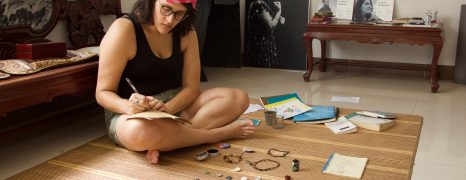

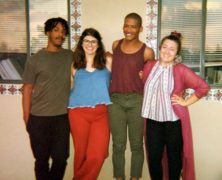
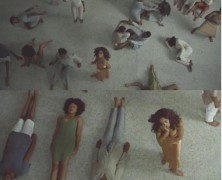
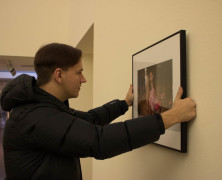
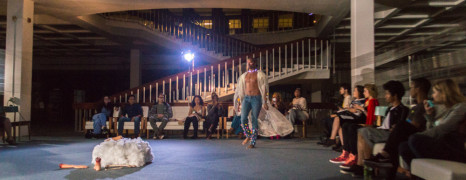
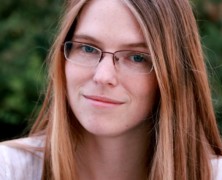

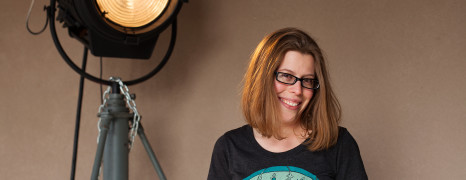


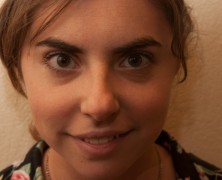
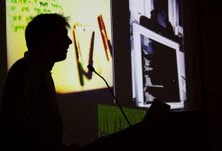
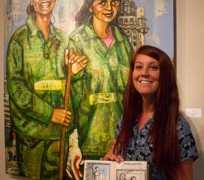
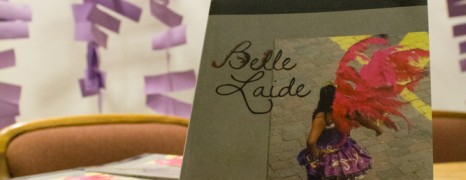
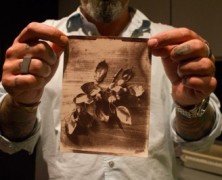
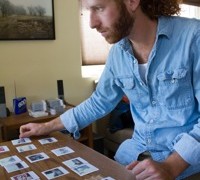
 Jackalope Magazine is the student magazine of Santa Fe University of Art and Design. Building on the interdisciplinary nature of our education, we aim to showcase the talent of our university and character of our city.
Jackalope Magazine is the student magazine of Santa Fe University of Art and Design. Building on the interdisciplinary nature of our education, we aim to showcase the talent of our university and character of our city.
Recent Comments